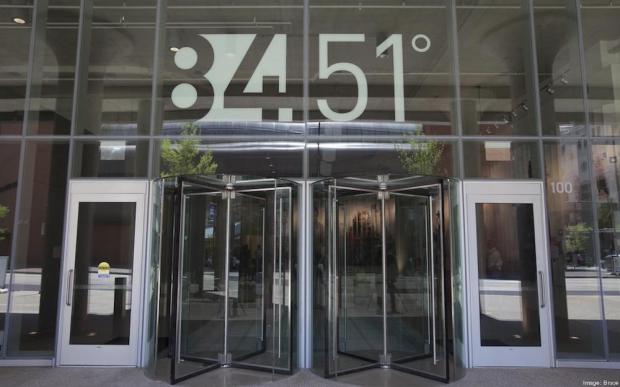Kroger’s Quiet Digital Grocery Push

The grocery realm has attracted many big headlines over the last few years — a phenomenon that went into overdrive six months ago when Amazon announced it was purchasing Whole Foods. Ever since that inflection point, the narrative surrounding grocery in the U.S. market has changed, framed largely as a competition between Amazon and Walmart, with increasing pressure from discount chains like ALDI. It might be an exaggeration to say Kroger was left out in the cold, but it hasn’t really been a major presence in the story.
However, Kroger looms large in its own right. The operator of over 2,000 grocery stores nationwide, the company is the second-largest physical retailer in the U.S., according to a National Retail Federation ranking. This distinction makes it second only to Walmart, with over $110 billion in annual sales across the range of grocery chains it owns and operates, including the eponymous Kroger Brand as well as Harris Teeter, Fred Meyers, Ralphs, Metro Market, Dillons and many, many others.
Kroger is committed to maintaining its market share — and not being overrun in the grocery war underway.
The Power of Size
With its size, Kroger packs a private label punch: The retailer carries around 30,000 SKUs (stock keeping units) for 8.2 billion products sold in 2016. That, according to Gil Phipps, Kroger VP of Corporate Brands, means customers are adding 1.25 million Kroger brand products to their carts every hour of every day their stores are open in the U.S.
The plan, he said, is to scale that effort up, not down.
“Through innovation, we are committed to introducing new items monthly that give our customers a wide selection of choices and price points, and always guaranteed quality,” Phipps told Progressive Grocer in an interview.
Scaling up its private offerings will include some expected areas, like food and household goods. The move will also feature an unexpected choice for Kroger: an apparel brand.
Kroger’s size also gives it a fair amount of pricing power. For all the press Amazon’s price cuts to Whole Foods elicited throughout 2017, it was Kroger’s announcement of its “price reinvestment plan” (a fancier way of saying “cutting prices”) that set off a wave of price-slashing in the segment that touched Walmart, Target and Amazon.
Though the price cuts have ignited worry over ever-thinning grocery margins — sparking investor concerns and resultant falling stock prices — Kroger remained adamant it could remain a leader on price, while still delivering on 2017 guidance and growth for 2018 — growth Kroger believes it can deliver through innovation.
The Developing Digital Channel
Kroger has been quietly amping up its technology game over the last several years, expanding its omnicommerce offerings as it seeks to remain competitive in a crowded market.
In 2015, Kroger announced the launch of 84.51° — its data analytics arm focused on creating better consumer engagement strategies. The name is a nod to the location of Kroger’s Cincinnati headquarters and is, by design, unusual, according to CEO Stuart Aitken.
“84.51° is founded on the principle that building the bottom line should be a result, not the primary objective. We want everything we do — every decision we make — to be about the customer and what that person wants. To do that, our associates navigate the complex data landscape to reveal relevant customer patterns,” Aitken said.
Reaching out to embrace those “relevant patterns” has led Kroger to rapidly reset its consumer-facing offerings quicker than its competition.
The big announcement to start the year is the expansion of its Scan, Bag, Go self-checkout technology from a handful of stores in the Cincinnati area to 400 stores in 2018. Those handful of stores, incidentally, have not been involved in a quick beta: The test has been ongoing for five years.
Scan, Bag, Go is Kroger’s contribution to killing the standard point-of-sale (POS) routine by allowing shoppers to use their smartphones to select items while they shop. When they’re finished, customers scan their phones at a checkout station, which digitally submits their payment, and exit. Kroger has confirmed that future iterations will be able to store payment data so consumers will be able to pay without even visiting a station.
“Today, households that engage in our seamless offerings, engaging digitally and with our physical stores, spend more per week than households that do not,” Kroger CEO Rodney McMullen told investors in November. “The future looks even more promising.”
The method bears some resemblance to what Walmart already has on offer at its Sam’s Club locations, and it’s somewhat different from Amazon’s proposed convenience store offering that would eliminate “scanning” by using sensors to keep track of items for consumers and charge them seamlessly on their way out the door.
But with 400 stores on the slate for 2018 going live with Scan, Bag, Go technology, Kroger’s offerings this year will be well ahead of the theoretical innovations on the way from either Walmart or Amazon.
Kroger is not often thought of as a tech power player; the retailer doesn’t quite elicit the same kind of drama the Walmart/Amazon feud generates.
But dramatic or not, Kroger will be a grocery force to be reckoned with going forward, if only a quiet one.
